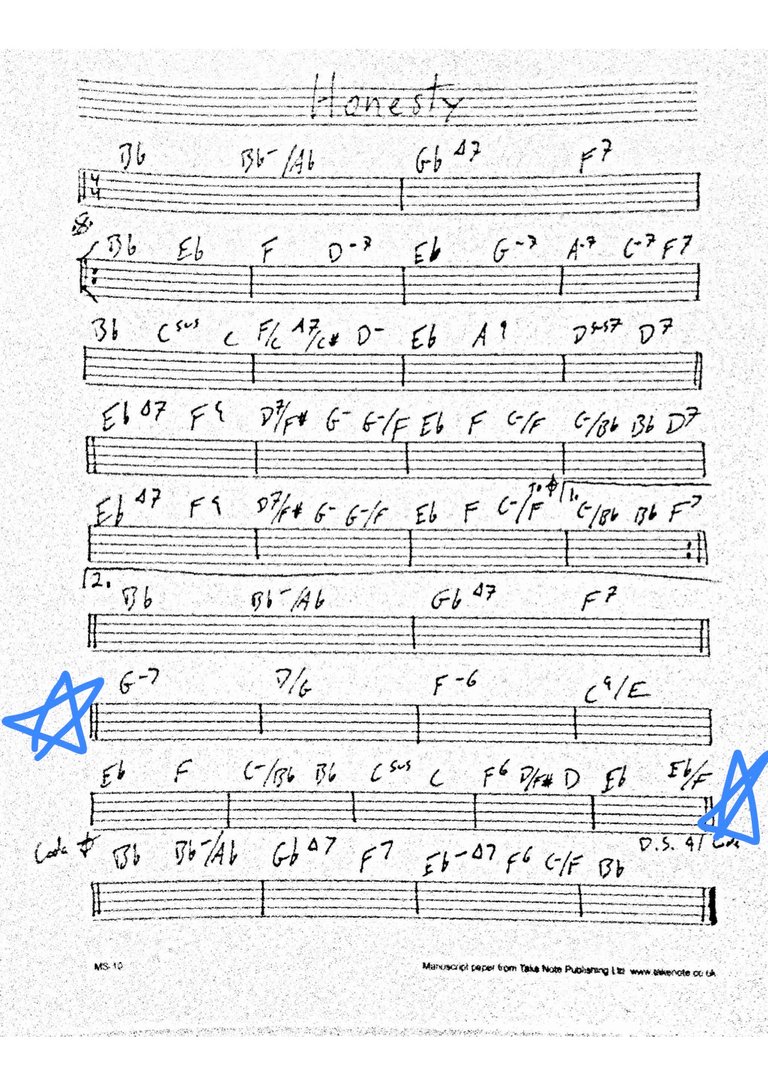
I can find a friend
I can find security until the bitter end
Anyone can comfort me with promises again, I know
G Minor, the first chord of the bridge, is the relative minor chord of our home key of Bb. A move to this chord is a departure of the smallest degree. G Minor consists of an identical set of notes to Bb Major; therefore, our ears do not hear a jarring jump to a new key center, just a slight drop sensation. It's just enough to feel as though we have gone somewhere new.
D over G is an unusual sound. By itself it might sound dissonant to our ears; however, it makes sense within this particular sequence following a G minor and being followed by F Minor 6. It adds edge and color to the tension portrayed by the lyric "I can find a friend"
F Minor 6 is an expressive sound. It carries great weight and makes our ears ready to land on the next chord.
C over E is a somewhat-resolved sound. A sense of relief fills us after arriving here from the F Minor 6, but since it is not in root position (E is the bass rather than C) we do not yet feel like we have arrived at our ultimate target.
Eb is a clever move here. Billy slides down a half-step from E to put us on a familiar path in this song: Eb to F to Bb.
The next few bars make us feel like anything could happen next. C Minor over Bb takes the inevitable Bb sound our ear is expecting and delays it for two more beats.
Csus to C mirrors this delayed resolution and charges us for a move to new territory once again. How, specifically, does this chord charge the music? It is functioning as a secondary dominant. These kinds of chords make the music feel like it is about to go somewhere new, usually to set up a grander path back to the home key.
F6 may be the logical chord to play after C, but Joel is not satisfied to stay here. He quickly lifts the bass note by a half-step to D over F#, a climb which hints at G Minor, but ultimately takes us back to the now solidly familiar Eb to F to Bb.
The chords in this bridge personify the emotions expressed by Joel's lyrics. He sings about the pain of being lied to, misled, and deceived. He sings about how difficult it is to find someone you can trust. He sings about how he can experience love, friendship, excitement, and tenderness that is clouded by insecurity without the presence of honesty.
The chords here never feel settled for long. Each time our ear hears a resolved sound we quickly move toward something new. It makes the perfect background for Billy to sing about these swirling, conflicting feelings inside him.

EDIT: Analyzing these two specific Billy Joel tunes back-to-back is beneficial because of their similarity: both bridges feature bass notes descending by stepwise motion through the scale.
She's Always A Woman descends through cycle-of-fifth motion, but Honesty descends by half-steps. Rather than choosing chords within the cycle-of-fifths, or the key center, in Honesty Billy Joel uses chords rooted by the particular bass note of the moment using qualities (major or minor) that work together in families.
This creates a sense of Tonal Ambiguity. Ambiguous tonality adds excitement to the music by imbibing it with a lifelike feeling.